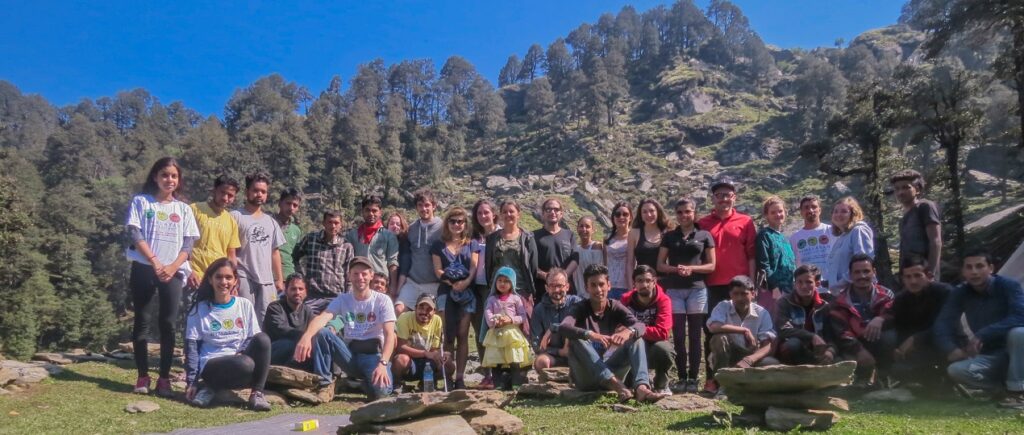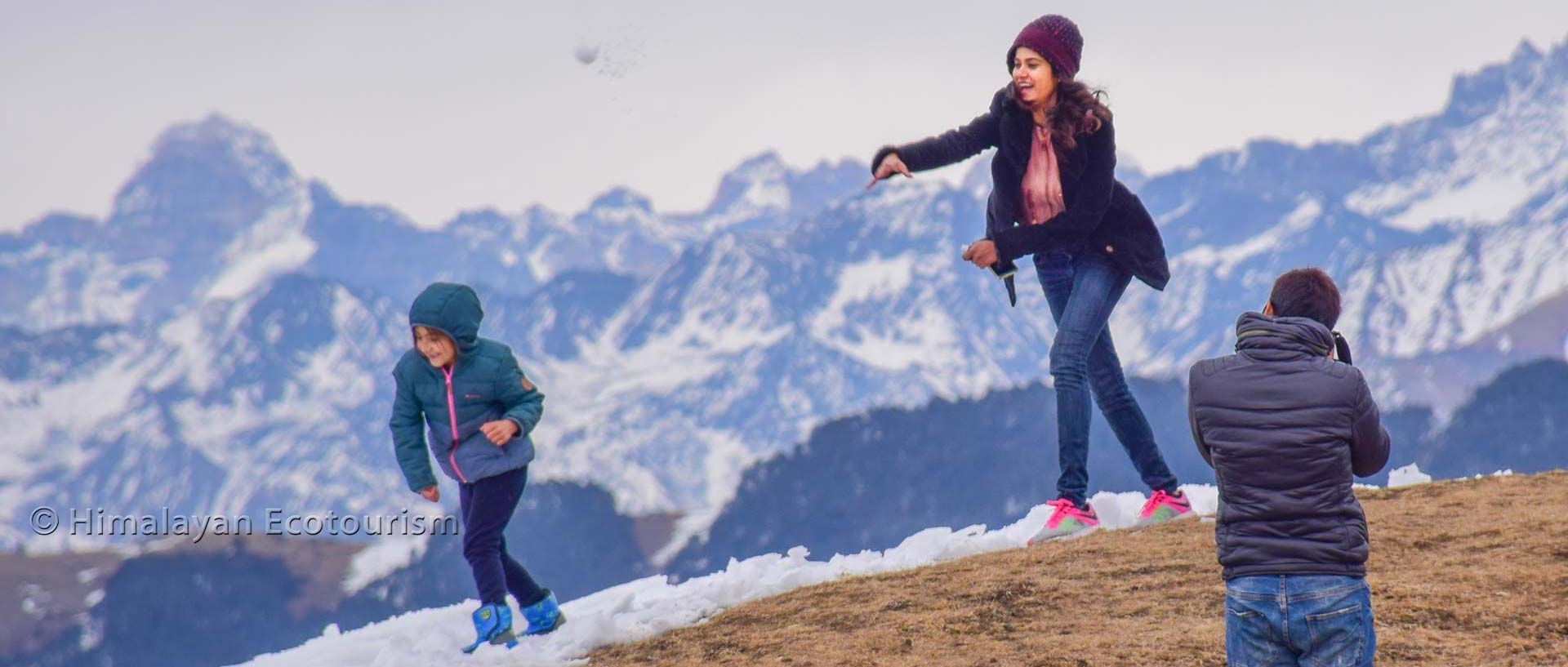My experience of sustainable tourism in the Himalayas
By Jett Walcott, former customer and volunteer of HET
Tourism is a massive industry and an important part of many countries economies. It can provide valuable employment and lift countless people out of poverty. However it also has many downsides. Tourism, if not practiced carefully, can lead to the destruction of the natural environment as well as the marginalization of the local communities. This is happening in many countries around the world but it doesn’t have to be this way. Through practicing sustainable responsible tourism we can preserve our beautiful natural environment and provide a source of income to the local communities struggling to survive in the modernising world. This is the type of tourism I experienced when I travelled to India in 2018.
When I first arrived in India I travelled to many of the tourist hotspots and marvelled at the majestic architecture and exquisite temples. I walked through local markets and was wowed by the vibrant colours, huge variety of goods and throngs of people. But there are only so many forts, temples and palaces you can gawk at before it starts to feel slightly repetitive. So I packed my bags and headed north: to the Himalayas.
I had heard about the magnificent Himalayan mountain range and awe inspiring treks around them so I searched around online and decided to book a trek in the Great Himalayan National Park, Himachal Pradesh. I found a company called Himalayan Ecotourism that offered a large variety of options and seemed to be ethically responsible and respectful of the natural environment. I contacted them to ask what trek I should choose if I had never trekked at high altitudes before yet still wanted a full experience of the Himalayas.
I eventually decided on a three day trek up to 3700 metres to Marahni and it was one of the best decisions I’ve made. It was an amazing life changing experience which I will never forget. From the enchanting fairy tale forests to the magnificent snow capped peaks the nature was stunningly beautiful, peaceful and serene. The staff were extremely supportive and attentive to our every need. They prepared food that was delicious and delectable and we ate a new dish every meal! At every turn there was new beauty to marvel at.
When I returned I decided to ask the owner of the company why the guides and staff were so dedicated to our wellbeing on the trek. What was in it for them? The next morning I met with Stephan Marchal – affectionately nicknamed the TinTin of the Himalayas by his friends. In his beautiful home he explained to me how the staff were all actually members of a cooperative society that functioned under the brand name of Himalayan Ecotourism. In this way each 65 members of the cooperative own a share in the company and share in its success. Stephan merely took care of the marketing and communication for the cooperative and they took care of everything else including managing the treks. “How could this have come to be?” I asked him.
Stephan was born in Belgium and drawn to India by a love for the unique way of life in the villages of the country. He had been working with various NGOs in Jharkhand for several years when he met his soon to be wife. He had always admired the majestic Himalayas and had heard about a troubled relationship between the administration of the Great Himalayan National Park and the local communities. So, wanting to establish a home for him and his family he decided to settle in Tirthan Valley and see what he could do to help. After speaking to the local trekking staff and villagers in the Great Himalayan National Park he noticed that the current state of tourism in the Park was not beneficial to the local community. In fact it was quite the opposite. So he suggested he and the locals meet to talk about the problems and after some discussion he shared a vision of a united cooperative of trekking staff who had more control of their own income and business as a potential solution. The locals were enthusiastic about this idea and so eventually the cooperative society was born. They still needed a way to bring business to the cooperative however, so Stephan was given the job of managing marketing. Eventually his commitment to the cooperative became Himalayan Ecotourism. A company created with the goal of empowering the local people to create their own future from the very start.

Over the years the many social initiatives have been created by HET to preserve the beauty of the Himalayas and further help the local Himalayan communities. This is why they call themselves a social enterprise – they are not just a business focused on profit. The two categories of social initiatives are conservation and women empowerment.
The destruction of the natural environment is a large problem in Himalayas. A lack of awareness and increasing modernisation has led to intense deforestation and the consequences that inevitably follow. Intentional forest fires are currently the most pressing problem. Villagers hoping to enhance their livelihoods start these fires without realising the adverse effects they have on the environment. HET is attempting to raise awareness among the villagers of the negative long term impacts of the fires so they realise their mistake. They do this through documentaries, posters, shirts, road signs and educating the local youth about the problem. They are also working to develop new green technologies such as a solar dryer so the villagers can sell their natural produce to tourists and trekkers. A clean more efficient stove which is in its last stage of development helps the villagers burn less wood and lessen their impact on the environment.
Women are often disenfranchised in rural India. However, they can often play a key role in the conservation effort. So HET is working to empower women in the local Himalayan communities to create their own source of income and livelihood through helping to preserve the Himalayan ecosystems. Some examples of this include training women as trekking guides and employing young women as office assistants and social workers in their company. A separate initiative is teaching the village women to make various natural products such as handmade soaps and jams that they can sell to tourists and the local communities. Through these initiatives local women are being encouraged to take control of their own lives.
Himalayan Ecotourism and the cooperative society aren’t completely perfect however. The Cooperative itself is subject to internal politics since they vote on important affairs and manage the business together. After all it’s not easy to get sixty-five people to agree on the same thing. At times it can be a struggle to interest the guides in improving their English to make it easier to communicate with foreign trekkers. However, despite these issues HET is doing their best to practice sustainable tourism and preserve the beauty of the Himalayas through raising awareness and enabling the locals to control their own business.
So is sustainable tourism really possible? Himalayan Ecotourism has convinced me that the answer is yes. As a social enterprise they’ve developed a successful business model that brings the locals together and promotes collective management of tourism related affairs. This enhances the cooperative members sense of responsibility and avoids unhealthy competition between them. They show that tourism can be used as a tool for promoting conservation efforts by involving the local people as shareholders in the tourism business. Therefore, I believe that if we work together and support responsible tourist companies we can stop careless destructive tourism and pave the way for the preservation of India’s natural beauty and environment.
And last but not the least, their unique model of tourism creates a brilliant experience for trekkers and tourists alike.
If you would like to experience trekking in the Himalayas with Himalayan Ecotourism visit their website:











